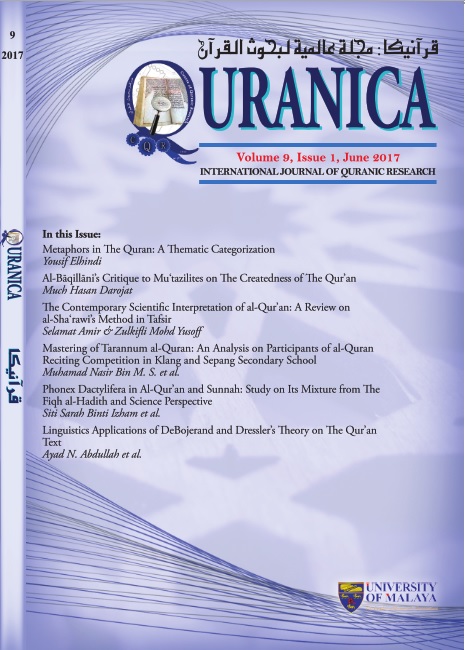Metaphors in the Quran: A Thematic Categorization
Main Article Content
Abstract
Muslims believe the Quran is a divine composition revealed to the Prophet Muhammad by the archangel Gabriel over a 23-year period in the 6th century. Considering the vitality of Arab literary tradition at the time, it was necessary that the Quran be miraculous not only in its content, but also in its form. Part of what made the revelation inimitable is the Quran’s eloquence, especially in its use of metaphors. This article looks into the different categories of Quranic metaphors and investigates their functions. Since the divine transcends the limited cognitive capabilities of human beings, and because literal language is insufficient to portray the existence and nature of the Divine, metaphoric expressions are essential to helping believers understand the elusive concept of ‘God.’ Additionally, another set of metaphors are used to explain the tenets Muslims must abide by in their quest to attain piety and be awarded when they meet their Lord on the Day of Judgment. Considering the importance of this ‘quest’ or ‘journey,’ which is repeatedly alluded to in the Quran, as one that moves through both ‘time’ and ‘place,’ temporal and spatial metaphors also fulfill an important function in the text.
Downloads
Article Details
Disclaimer
QURANICA makes every effort to ensure the accuracy of all its contents. However, opinions, discussions, views and recommendations are expressed in this journal do not necessarily reflect the official policy of QURANICA or views of its editors or publishers. Therefore, QURANICA and its publishers will not be liable for any controversy may be arisen. The journal reserves the right, at its sole discretion, to change its terms and conditions of publications.
Copyright
It is a condition of publication that manuscript submitted to the journal have not been published, accepted for publication, nor simultaneously submitted for publication elsewhere. By submitting a manuscript, the author(s) agrees that copyright for the article is transferred to the publisher, if and when the manuscript is accepted for publication.
